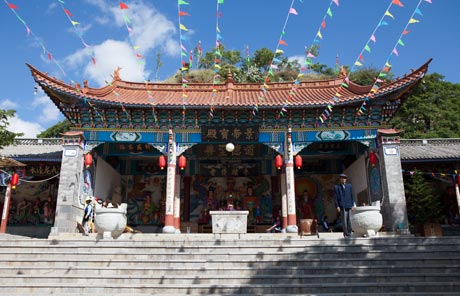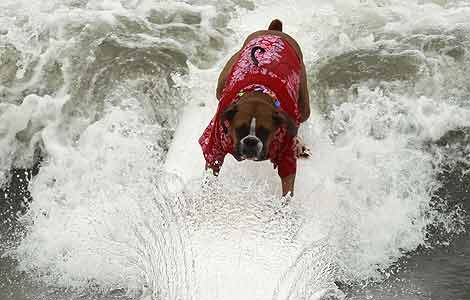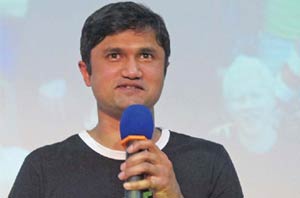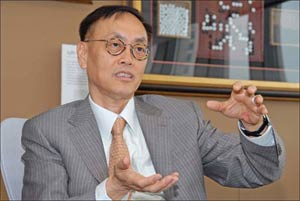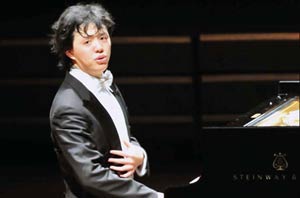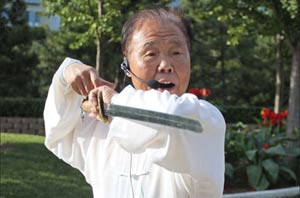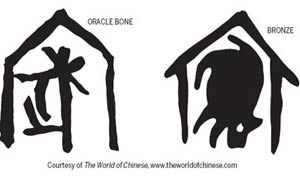Forbidden, now Palace of the people
Updated: 2011-10-11 07:58
By Yu Fei (China Daily)
|
|||||||||
The Palace Museum was home to 24 emperors but now houses many of the country's greatest treasures
Wang Ge got lost on his first day working in Beijing's Forbidden City, a 500-year-old palace of some 9,000 rooms, huge walls and labyrinthine passageways.
The Forbidden City, also known as Palace Museum, is in the heart of the capital and covers 720,000 square meters.
It was home to 24 emperors of the Ming (1368-1644) and Qing (1644-1911) dynasties.
"I couldn't see anything modern, just old walls and the roofs of halls. I had never felt so close to history," Wang says of his first day working at the Palace Museum's exhibition department, 11 years ago.
Like many other museum employees, Wang rides a bicycle to work every day, but he didn't know that 100 years earlier China's last emperor, Pu Yi, too, cycled around the Forbidden City. He even ordered the thresholds of some palace gates removed so he could ride without hindrance.
Pu Yi ascended the throne in 1908 and was forced to abdicate after the 1911 Revolution. According to the articles of favorable treatment determined by the interim government of the Republic of China and the Qing court, Pu Yi was allowed to continue living in the palace.
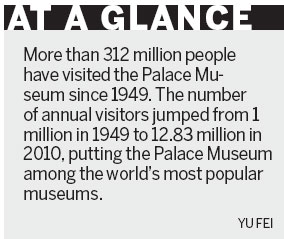
Following a coup launched by warlord Feng Yuxiang in 1924, however, Pu Yi was forced to leave the Forbidden City. Later, scholars, government officials and former Qing officials formed the Committee for the Readjustment of the Affairs of the Qing House, to establish the Palace Museum.
At the opening ceremony of the Palace Museum on Oct 10, 1925, the committee announced: "From now on, this place belongs to all the people of China."
"Turning from the Forbidden City to the Palace Museum was a symbol of epochal change," says Li Gongming, an art history professor at Guangzhou Academy of Fine Arts.
"Its connotation of political power was replaced by civil rights and cultural exchanges," Li says.
As an ordinary citizen, Pu Yi revisited the former palace in 1959.
In his autobiography, From Emperor to Citizen, Pu Yi wrote: "What I found most surprising was that the air of decay and collapse I had known there when I left had disappeared.
"In the imperial garden I saw children playing in the sun and old men sipping tea. I sniffed the spring fragrance of the ancient cypresses and felt that the sun was shining brighter here than it had ever done before. I was sure that the former palace had taken a new lease on life."
The family of Liang Jinsheng, former head of the cultural relics administration department at Palace Museum, experienced the transformation of the Forbidden City to the Palace Museum.
Some of Liang's ancestors were imperial painters during the Qing Dynasty. After the Palace Museum was established, Liang's grandfather worked at the museum protecting the relics.
When Japan invaded northern China in the early 1930s, the Kuomintang government transferred the Palace Museum's antiquities to the south, setting the Liang family on a path of migration, along with the relics.
Liang Jinsheng and his siblings were born during the long journey to the south.
"Despite the chaos of war, the large number of antiques were well protected because the government valued them very much, and the Palace Museum employees fulfilled their duties diligently," Liang says.
When the Kuomintang government was defeated in the civil war, 1949, Liang's grandfather was ordered to escort nearly 3,000 trunks of the most precious antiquities to Taiwan province, while Liang's father was ordered to stay in Nanjing, Jiangsu province, to protect the rest of the treasures.
Liang's father returned to Beijing in 1954, to transfer the remaining antiquities to the Palace Museum.
"When I was a kid, I often went to the palace with my father. I liked to search for crickets under the bricks," Liang recalls.
After years of war, the palace was desolate, strewn with garbage and weeds. In the early 1950s, more than 250,000 cubic meters of trash was cleared out of the palace. The State Council placed the Palace Museum under protection in 1961. It became a UNESCO World Heritage Site in 1987.
Following in the footsteps of his father and grandfather, Liang started to work at the Palace Museum in 1979, devoting his life to relics research and protection till his retirement.
In January 2011, Palace Museum announced it housed 1.807 million cultural relics, the first time that an accurate account of its collection had been revealed.
It took more than seven years for the museum to thoroughly inspect and catalogue its vast collection - a process that left a deep impression on Liang.
Although he hasn't seen all of the antiquities at the museum, he says he has probably seen more than anyone else.
Like Liang, Wang Ge is one of the lucky few who have had a comprehensive look at this treasure trove.
Although halls along the central axis and many of the main buildings in the Forbidden City have been opened to the public for years, most of the Palace is used as offices or warehouses and are restricted.
Wang got an opportunity to look over these restricted areas when he was assigned the job of drawing a plan of the Palace Museum.
"I won't get lost here any more. I feel my heart is deeply rooted here, and I will never leave," Wang says.
China Features
(China Daily 10/11/2011 page18)

